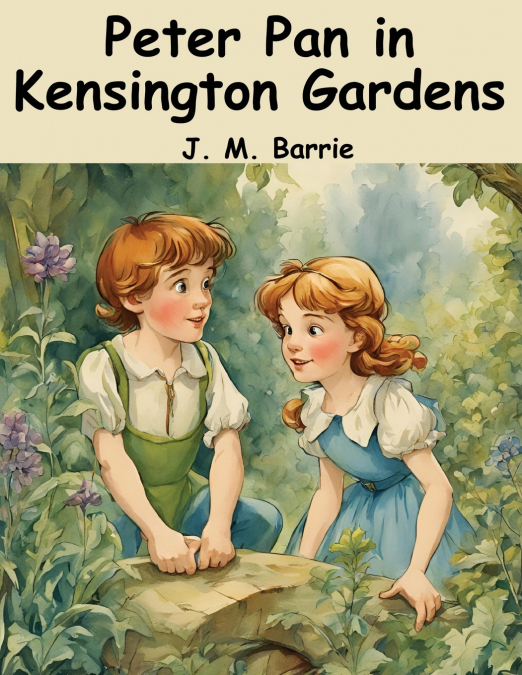
J. M. Barrie
Peter Pan in Kensington Gardens by J. M. Barrie is a charming and whimsical tale that introduces readers to the early adventures of Peter Pan, the boy who refuses to grow up. This story serves as a prequel to the more widely known Peter and Wendy, offering a glimpse into Peter’s origins and his initial forays into the magical world.The narrative begins with Peter Pan as a very young boy who, after escaping from his nursery window, finds himself in Kensington Gardens. Here, he discovers a world teeming with fairies, birds, and other fantastical creatures. Peter, who can fly with the help of fairy dust, revels in the freedom of the gardens and embraces his new life with unbridled enthusiasm.Kensington Gardens, located in London, is depicted as a place where magic is hidden in plain sight. Barrie’s descriptions bring the gardens to life, transforming them into an enchanted realm where ordinary rules do not apply. The detailed portrayal of the flora and fauna, along with the whimsical inhabitants, creates a vivid and immersive setting that captivates the reader’s imagination.Central to the story is Peter’s interaction with the fairies and other magical beings of Kensington Gardens. He befriends Queen Mab and the other fairies, becoming an integral part of their world. These interactions highlight Peter’s unique ability to bridge the human and fairy worlds, showcasing his adventurous spirit and his longing for companionship despite his insistence on remaining independent and carefree.One of the most poignant aspects of the story is Peter’s realization of his eternal childhood. Unlike other children who grow up and leave the magical world behind, Peter remains perpetually young. This realization is both a blessing and a curse, as Peter experiences the joys of endless play and adventure but also the loneliness of never truly belonging to either the human or fairy world. This theme of eternal youth and the bittersweet nature of Peter’s existence is a central element of the story.The narrative also introduces readers to the concept of the 'Birds’ Island,' where baby Peter once lived among the birds before discovering the fairies. This part of Peter’s backstory adds depth to his character, illustrating his natural affinity with all creatures and his adventurous nature. The idea that Peter once considered himself a bird before becoming the leader of the fairies adds a layer of complexity to his identity.Barrie’s writing is imbued with a sense of wonder and enchantment. His lyrical prose and imaginative descriptions create a magical atmosphere that draws readers into the world of Kensington Gardens. The dialogue between Peter and the other characters is filled with wit and charm, reflecting the playful and whimsical nature of the story.Themes of freedom, innocence, and the passage of time are woven throughout the narrative. Peter’s adventures in Kensington Gardens serve as a metaphor for the fleeting nature of childhood and the inevitable transition to adulthood. Yet, Peter’s refusal to grow up and his embrace of eternal youth provide a counterpoint to this theme, celebrating the joy and wonder of remaining forever young.In conclusion, Peter Pan in Kensington Gardens by J. M. Barrie is a delightful and enchanting story that offers a deeper understanding of Peter Pan’s character and his origins. The magical setting of Kensington Gardens, combined with Barrie’s lyrical writing and the exploration of themes like eternal youth and the passage of time, make this a timeless classic. It is a must-read for anyone who loves the magic of Peter Pan and the enchanting world he inhabits.